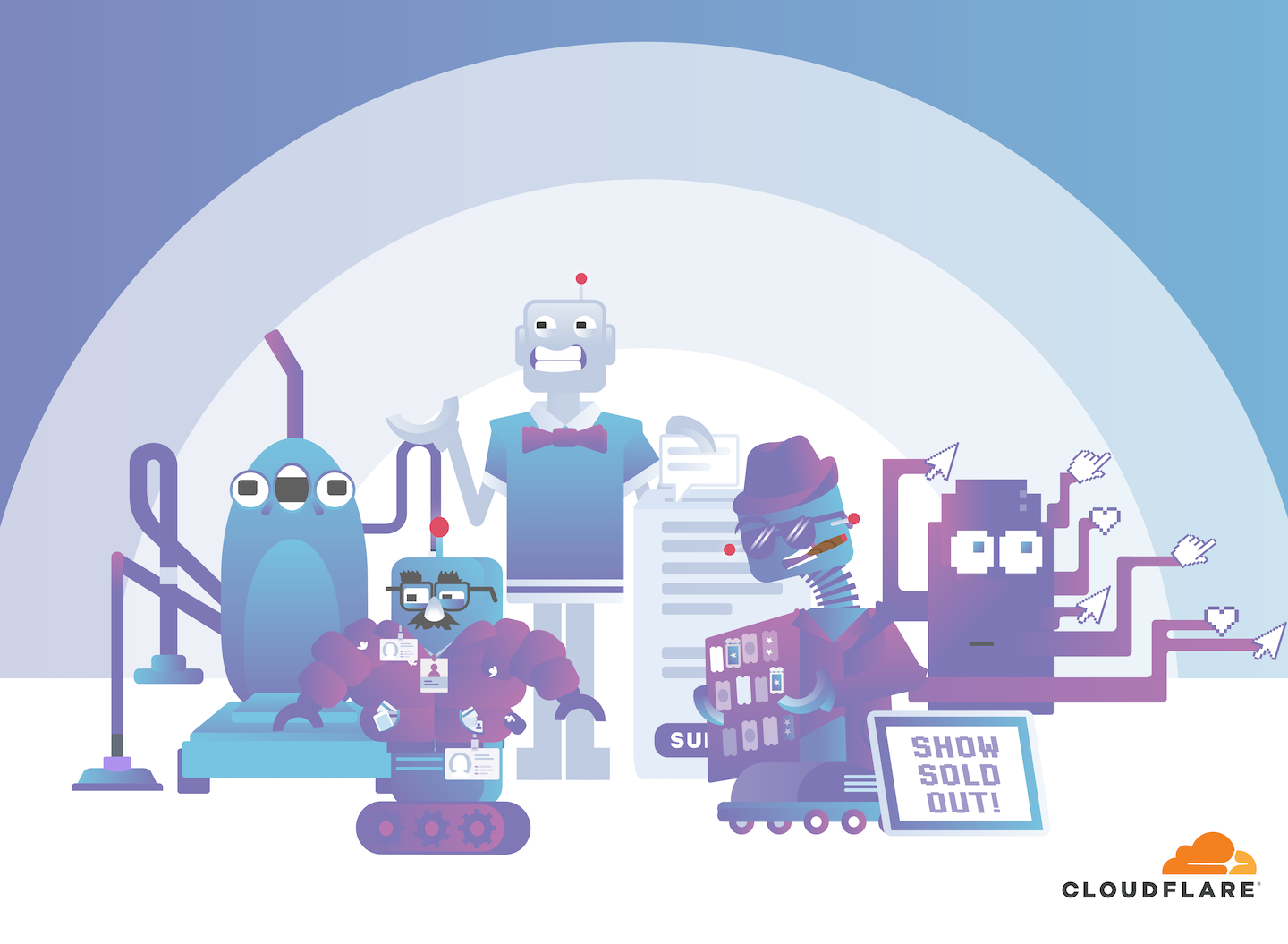What is a bot? | Bot definition
A bot is a software program that operates on the Internet and performs repetitive tasks. While some bot traffic is from good bots, bad bots can have a huge negative impact on a website or application.
Learning Objectives
After reading this article you will be able to:
- Understand what a bot is and what bots do
- Explain the difference between good bots and bad bots
- Learn how to stop bad bot traffic
Related Content
What is bot management?
What is content scraping?
Data scraping
Brute force attack
What is credential stuffing?
Want to keep learning?
Subscribe to theNET, Cloudflare's monthly recap of the Internet's most popular insights!
Copy article link
Defend against bot attacks like credential stuffing and content scraping with Cloudflare
What is a bot?
A bot is a software application that is programmed to do certain tasks. Bots are automated, which means they run according to their instructions without a human user needing to manually start them up every time. Bots often imitate or replace a human user's behavior. Typically they do repetitive tasks, and they can do them much faster than human users could.
Bots usually operate over a network; more than half of Internet traffic is bots scanning content, interacting with webpages, chatting with users, or looking for attack targets. Some bots are useful, such as search engine bots that index content for search or customer service bots that help users. Other bots are "bad" and are programmed to break into user accounts, scan the web for contact information for sending spam, or perform other malicious activities. If it's connected to the Internet, a bot will have an associated IP address.
Bots can be:
- Chatbots: Bots that simulate human conversation by responding to certain phrases with programmed responses
- Web crawlers (Googlebots): Bots that scan content on webpages all over the Internet
- Social bots: Bots that operate on social media platforms
- Malicious bots: Bots that scrape content, spread spam content, or carry out credential stuffing attacks

What is malicious bot activity?
Any automated actions by a bot that violate a website owner's intentions, the site's Terms of Service, or the site's Robots.txt rules for bot behavior can be considered malicious. Bots that attempt to carry out cybercrime, such as identity theft or account takeover, are also "bad" bots. While some of these activities are illegal, bots do not have to break any laws to be considered malicious.
In addition, excessive bot traffic can overwhelm a web server's resources, slowing or stopping service for the legitimate human users trying to use a website or an application. Sometimes this is intentional and takes the form of a DoS or DDoS attack.
Malicious bot activity includes:
- Credential stuffing
- Web/content scraping
- DoS or DDoS attacks
- Brute force password cracking
- Inventory hoarding
- Spam content
- Email address harvesting
- Click fraud
To carry out these attacks and disguise the source of the attack traffic, bad bots may be distributed in a botnet, meaning copies of the bot are running on multiple devices, often without the knowledge of the device owners. Because each device has its own IP address, botnet traffic comes from tons of different IP addresses, making it more difficult to identify and block the source of the malicious bot traffic.
How can companies stop malicious bot activity?
Bot management solutions are able to sort out harmful bot activity from user activity and helpful bot activity via machine learning. Cloudflare Bot Management stops malicious behavior without impacting the user experience or blocking good bots. Bot management solutions should be able to identify and block malicious bots based on behavioral analysis that detects anomalies, and still allow helpful bots to access web properties.
To learn more about setting up bot protection, see our Developer documentation.